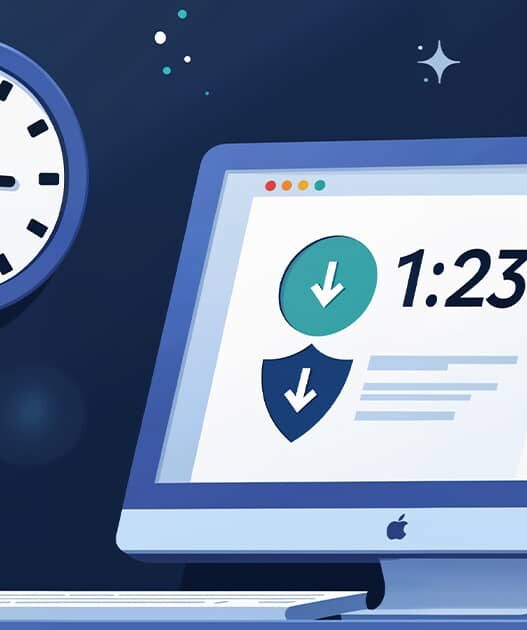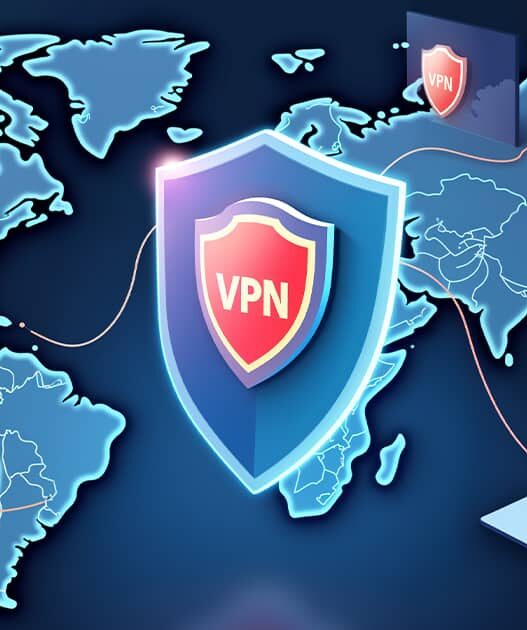Introduction
Torrenting can be a convenient way to download large files, but it also comes with risks. From exposing your IP address to potential legal issues and downloading malware, staying safe while torrenting requires some precautions. Whether you’re new to torrenting or a seasoned user, it’s crucial to follow best practices to protect your privacy, security, and avoid legal trouble.
In this article, we’ll cover essential tips and tools to help you stay safe while torrenting, ensuring that you can enjoy your downloads with peace of mind.
1. Use a VPN to Hide Your IP Address
A VPN (Virtual Private Network) is one of the most effective tools for protecting your privacy while torrenting. It encrypts your internet traffic and routes it through a secure server, masking your real IP address. This prevents your ISP, copyright holders, and others from tracking your torrenting activity.
Why It’s Important:
- Privacy Protection: A VPN hides your IP address, making it difficult for third parties to monitor your activity.
- Avoid Throttling: ISPs often throttle internet speeds for torrent users. A VPN can help bypass this by encrypting your traffic.
- Access Restricted Content: Some torrent sites may be blocked in your country. A VPN allows you to bypass geo-restrictions and access content freely.
Best VPNs for Torrenting:
- ExpressVPN: Fast speeds and strong encryption with no logs.
- NordVPN: Double encryption and P2P-optimized servers.
- CyberGhost: Affordable and optimized for torrenting.
2. Stick to Legal Torrents
Downloading copyrighted material without permission is illegal in most countries and can lead to fines or legal action. To avoid legal trouble, stick to downloading legal torrents such as public domain files, open-source software, and Creative Commons-licensed content.
Popular Sites for Legal Torrents:
- Public Domain Torrents: A collection of public domain movies available for free download.
- Project Gutenberg: Offers thousands of free eBooks in the public domain.
- Legit Torrents: Provides legal torrents for movies, software, and music.
Tip: Always verify the content’s copyright status before downloading.
3. Use Antivirus Software
One of the biggest risks of torrenting is accidentally downloading malware or viruses embedded in files. Many torrent files, especially those from untrusted sources, may contain harmful software designed to infect your device.
How to Stay Safe:
- Use Antivirus Software: Make sure you have reliable antivirus software installed and regularly updated. It can automatically scan files for malware before you open them.
- Scan Files Before Opening: Even if a file looks legitimate, run a scan before opening it. Most antivirus programs allow you to manually scan specific files or folders.
Recommended Antivirus Software:
- Bitdefender: Offers strong protection against malware and ransomware.
- Norton 360: Comprehensive security suite with real-time protection.
- Kaspersky: Known for its excellent malware detection rates.
4. Check Torrent Comments and Ratings
Before downloading a torrent, check the comments and ratings from other users. Torrents with positive comments and high ratings are usually more reliable and less likely to contain malware or low-quality content. On the other hand, if users report issues like malware, slow speeds, or fake files, avoid downloading that torrent.
Tips for Choosing Reliable Torrents:
- Look for High Seeder-to-Leecher Ratios: Torrents with more seeders are usually faster and more reliable.
- Read Comments: See if other users report any issues with the torrent or file.
- Stick to Trusted Uploaders: Some torrent sites have verified or trusted uploaders, meaning their files are more likely to be safe and high-quality.
5. Enable Encryption in Your Torrent Client
While a VPN offers robust privacy protection, most torrent clients also include built-in encryption options. Enabling encryption in your torrent client adds another layer of security, making it more difficult for your ISP or others to monitor your activity.
How to Enable Encryption:
- qBittorrent: Go to Tools > Preferences > BitTorrent and set Encryption Mode to Require Encryption.
- uTorrent: Go to Options > Preferences > BitTorrent and select Forced under Protocol Encryption.
Note: While this doesn’t provide the same level of security as a VPN, it can help obscure your torrenting activity from ISPs.
6. Use PeerBlock to Block Malicious IPs
PeerBlock is a tool that helps block connections from known malicious IP addresses, including those used by copyright holders and government agencies to monitor torrent traffic. While not foolproof, PeerBlock adds an extra layer of security by preventing suspicious IP addresses from connecting to your device.
How to Use PeerBlock:
- Download and install PeerBlock.
- Choose the type of IPs you want to block (e.g., government, spyware, education, etc.).
- Start PeerBlock before you begin torrenting to block unwanted connections.
Limitations:
- PeerBlock cannot block all monitoring IP addresses, and it’s not a substitute for using a VPN. It’s best used in combination with other security measures.
7. Seed Responsibly
Seeding is an essential part of torrenting, where you share pieces of the file you’ve downloaded with other users. However, seeding copyrighted material can expose you to legal risks, as it involves uploading and distributing files, which may attract attention from copyright holders.
Best Practices for Seeding:
- Seed Legal Content Only: If you want to avoid legal issues, only seed public domain or Creative Commons-licensed content.
- Limit Your Seeding Time: Set a limit on how long you seed files to minimize your exposure to potential monitoring.
- Use a VPN While Seeding: Always use a VPN while seeding to protect your privacy and prevent your IP address from being exposed.
Conclusion
Torrenting can be a safe and efficient way to download large files, but it requires some precautions to avoid privacy, legal, and security risks. Using a VPN, sticking to legal torrents, scanning files with antivirus software, and enabling encryption in your torrent client are essential steps for safe torrenting. By following these tips and using the recommended tools, you can protect yourself while enjoying the benefits of torrenting.
















